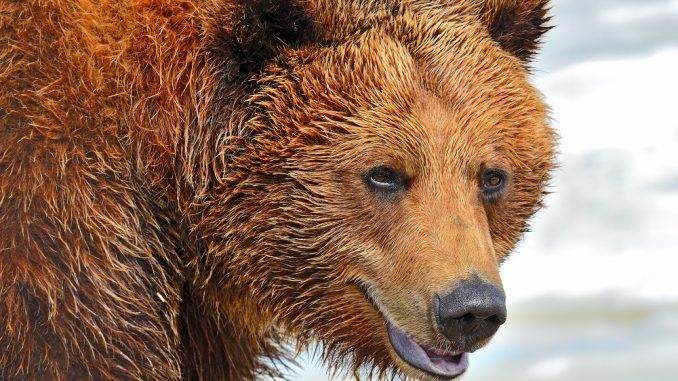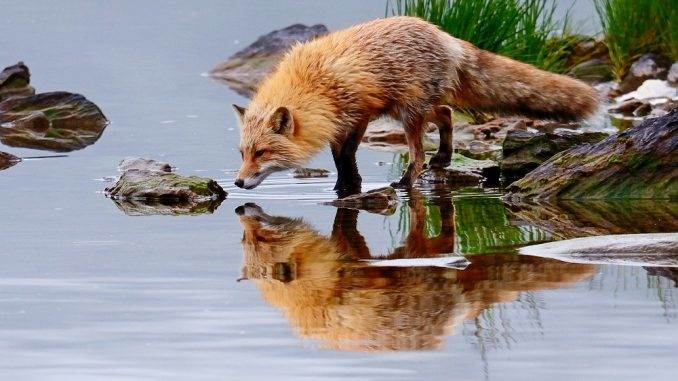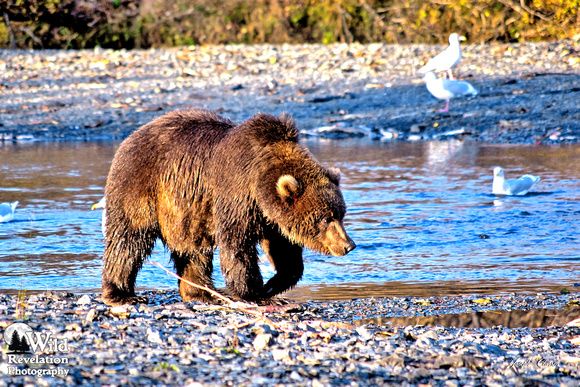The following is a story I often share for educational purposes and particularly in relation to wildlife photography ethics. While it is essentially fictional, as far as the main character, etc., the actions and behaviors described, of both human and animal, are ones that I have witnessed time and time again throughout my experience as an Alaskan guide and professional nature/wildlife photographer.
Think of this tale as a compilation of actual events intended to fully describe what not to do while attempting to photograph wild animals.

It’s unfortunately a scene that happens rather often. An uncomfortably small, shiny rental car, that has no business being off-the-beaten path, pulls over to the side of a muddy, pothole filled gravel road.
With the engine still running and the radio blaring, the driver side door opens and a dangerously enthusiastic, ill-prepared tourist emerges with a super-sized, bladder busting drink in one hand, and a smart phone in the other.
Leaving the door wide open, to be potentially ripped off by the local logging trucks that speed up and down these routes, the tourist begins a not-so-stealthy approach toward a black bear that is causally feeding at the edge of an overgrown meadow.
While still laughing and conversing at high volume with the person in the passenger seat, the would-be wildlife photographer stumbles clumsily across the wet, uneven, grassy terrain…finding out that flip flops, indeed, are not the best footwear for such an undertaking.
The black bear, a rather malnourished looking young fellow, doesn’t pay much attention to the commotion at first. He is busy feasting on an elk calf that he was lucky enough to kill and drag away to what he thought would be a relatively undisturbed area to eat in peace.
He desperately needs the calories to make it through the harsh, approaching winter. The tourist keeps approaching, looking back at his companion, in excited disbelief that he is getting so close to this wild animal!

As he closes in further, the wind shifts and the bear immediately catches the pungent, urban scent of his photographic pursuer, and freezes! The bear’s first instinct is to immediately flee, but his growling belly tells him to stay…so he does.
Now at dangerously close range, the tourist begins his best attempt at stalking in even closer for the shot. Crouching low, and awkwardly fumbling, as if to conceal his obvious presence, he moves a few yards closer, then stands up and begins a series of “selfies” and other smartphone photography masterpieces.
Hoping to get a few close-up action shots of the bear, the tourists flings a granola bar in his direction, waves his arms, and begins hollering some indiscernible gibberish, hoping that the bear will strike some classic poses!
The black bear jolts to attention, stands up on his hind legs in alarmed disbelief of what he is experiencing, and runs for his life, terribly frightened of this threatening, disruptive creature that has run him off of the meal he was in such dire need of. The bear won’t be back. Who knows what could happen the next time! There could be even more of these cotton-clad beasts around.
The Importance Of Wildlife Photography Ethics
For many nature lovers, tourists, and photographers, capturing beautiful, memorable images of wildlife, in truly wild places, can indeed be a once in a lifetime experience. Such a coveted opportunity can create a well-prepared, disciplined approach to making the most of a rare experience, or, in many cases unfortunately, it can tempt one to engage in some very harmful, disrespectful, and even dangerous actions…to one’s self, and ultimately the animals.
Wild animals, and the places they call home, demand the utmost respect and care! In many ways, most wild creatures are like people: they don’t appreciate it much if you mess with their living quarters, food, family, personal space, or wake them up from a nap. Not to mention, larger, potentially dangerous animals can also get very angry and aggressive when such disrespect is shown.
A grim reminder of this took place in 2012, when a man was killed by a grizzly bear in Denali Park while apparently trying to photograph the animal at too close of a range. Along with the photographer tragically losing his life, the bear also ended up being killed as a part of the investigation, which is usually the case in such circumstances.
An important point to remember when it comes to wildlife photography ethics, is that how one interacts with wild animals not only dictates the outcome of the encounter for one’s self, but it also dictates and influences how that animal will react to future encounters with humans. Thus, an improper wildlife encounter puts you, future people, and the animals themselves in potential danger.
Preparing for, and carrying out a wildlife photo shoot is not something to take lightly. Every step of such an undertaking should be planned with great care and attention to detail. Long before one ever steps foot into the natural world in hopes of capturing images of the creatures that call it home, one should thoroughly research and learn everything one can about the variety of wildlife that lives there, their defining characteristics and behavioral habits, as well as becoming well educated about the details of their habitat.
Along with getting to know all you can about your potential photography subjects and their home turf, one should likewise take the time to learn and develop the basic principles and proper techniques of wildlife photography. One should be equipped with the right camera gear, such as a substantial zoom/telephoto lens which enables one to stay a long, safe, respectful distance away from a wild animal and its comfort zone.
Finally, one should also learn, develop, and practice wilderness etiquette. That is, leaving as little an impact of your human presence in an area as possible, and practicing the leave no trace method of outdoor ethics.
Another very important point to remember when considering wildlife photography ethics, is that the same degree of preparation, patience, care, safety and respect that goes into one’s preceding efforts at making a wildlife photography shoot a reality, should also be applied afterwards. First and foremost, after one has finished photographing wildlife, especially if one has done so in an undetected manner, one should make every effort to continue to remain undetected until the animal leaves the area on its own, undisturbed.
While this may take a while and one may need to be very patient, doing so helps to ensures that the animal will not alter its behavior due to human presence. Wild animals that are pressured too much or greatly disturbed in their primary habitat will often move out of the area, which could result in them not getting the proper food they need, and it could also cause undue stress and danger by forcing them to leave an area that has been a safe sanctuary.
Even if you are photographing animals in an area in which they are well aware and somewhat tolerant of your presence, it is still of the utmost importance to exit that area in a safe, respectful manner. Nobody like to have their home invaded and be rudely harassed and disturbed. Being respectful at all times in one photography efforts, before, during, and after the shoot, will ensure the safety and well-being of the animals themselves, the places they call home, and the future humans who may enjoy the treasured opportunity to be a guest in their domain.
About the Author
Joseph Classen is a professional guide, multi-published writer, and nature & wildlife photographer from Kodiak Island, Alaska. He is the author of several photography books, including, Wildlife Photography: Advanced Field Techniques for Tracking Elusive Animals and Capturing Magical Moments.
To see and learn more about his photography and writing work, or inquire about his services, please visit his Wild Revelation Photography website: www.wildrevphoto.com


Leave a Reply